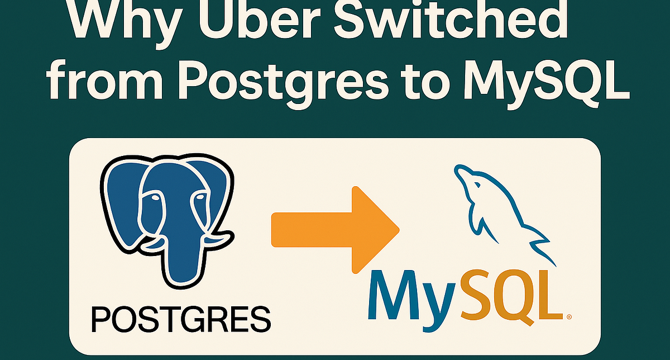Medium
1M
299

Image Credit: Medium
Why uber ditched postgres for mysql: What every developer can learn from it
- Uber transitioned from PostgreSQL to MySQL as its database solution due to PostgreSQL's limitations with scale and performance as the company grew.
- PostgreSQL faced issues such as index bloat, replication challenges, and complex upgrade paths as Uber's platform expanded globally.
- MySQL was chosen for its simpler replication model, better scalability, and flexibility in handling evolving data needs at Uber's scale.
- Uber's custom Schemaless system was built on top of MySQL to provide real-time consistency, easier upgrades, and enhanced tooling for operations.
- MySQL's simpler replication system, ease of upgrades, and compatibility with containerized services made it a better fit for Uber's needs.
- The switch from PostgreSQL to MySQL was not about one being better than the other, but about choosing the right tool for the evolving requirements.
- Uber's migration sparked discussions in the developer community on database choices and the importance of selecting tools based on specific needs rather than trends.
- The focus on monitoring, metrics, and internal tooling helped Uber identify bottlenecks and adapt their database solution for improved performance.
- Uber's approach emphasized building fast, observing early, and refactoring continuously to optimize for scale and operational efficiency.
- The key takeaway is to prioritize what works best for the problem at hand, rather than sticking to popular choices, especially when scaling operations.
- Choosing the right database solution involves considering trade-offs and aligning tools with the specific requirements and growth trajectory of the organization.
Read Full Article
18 Likes
For uninterrupted reading, download the app